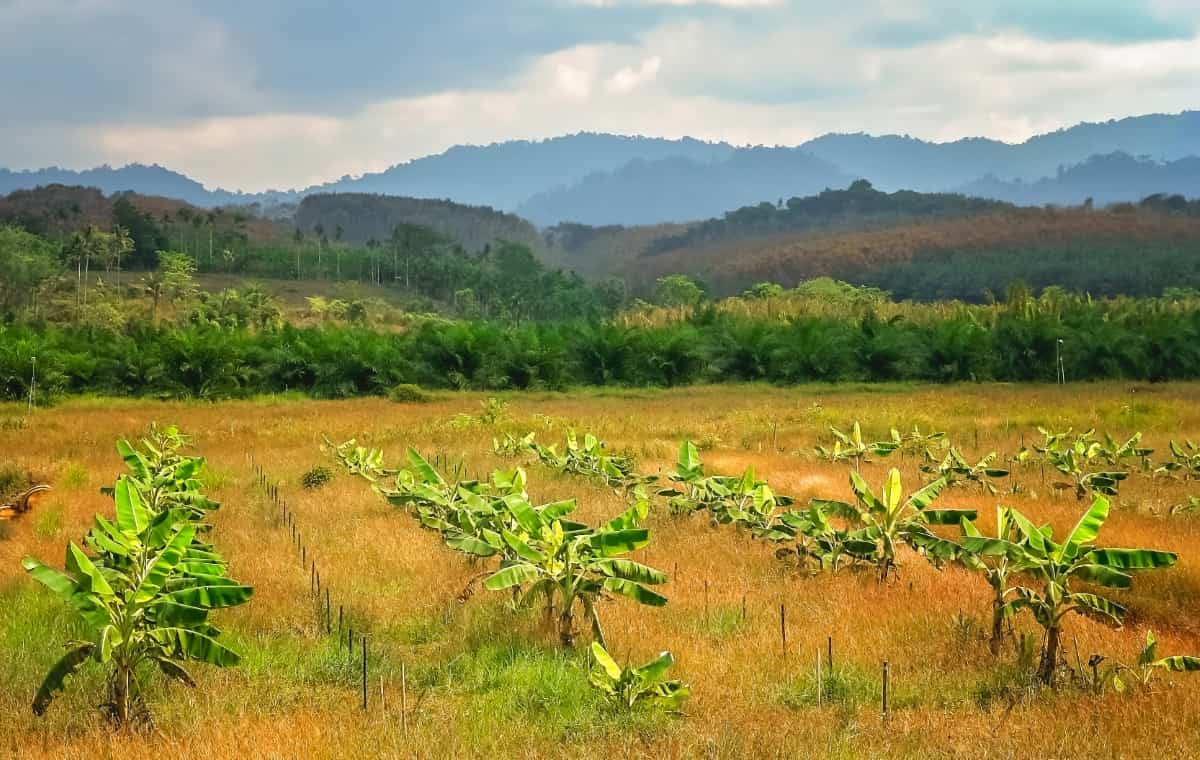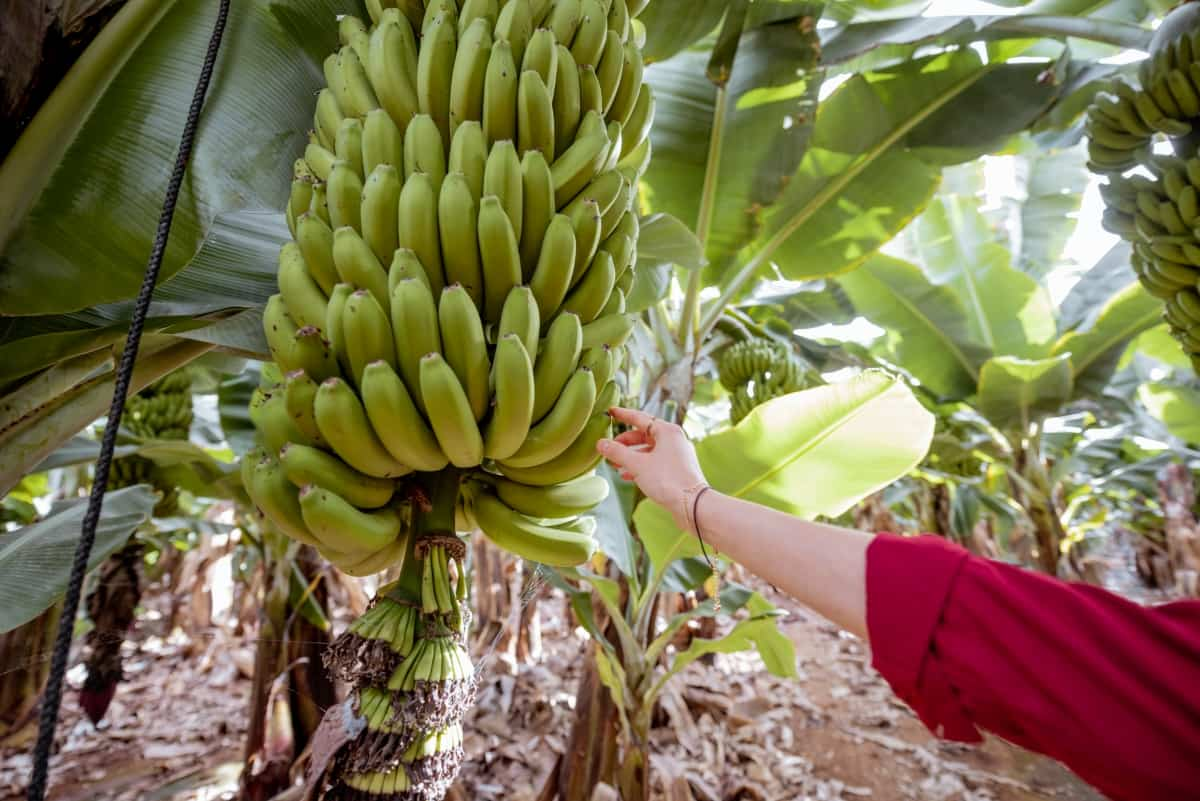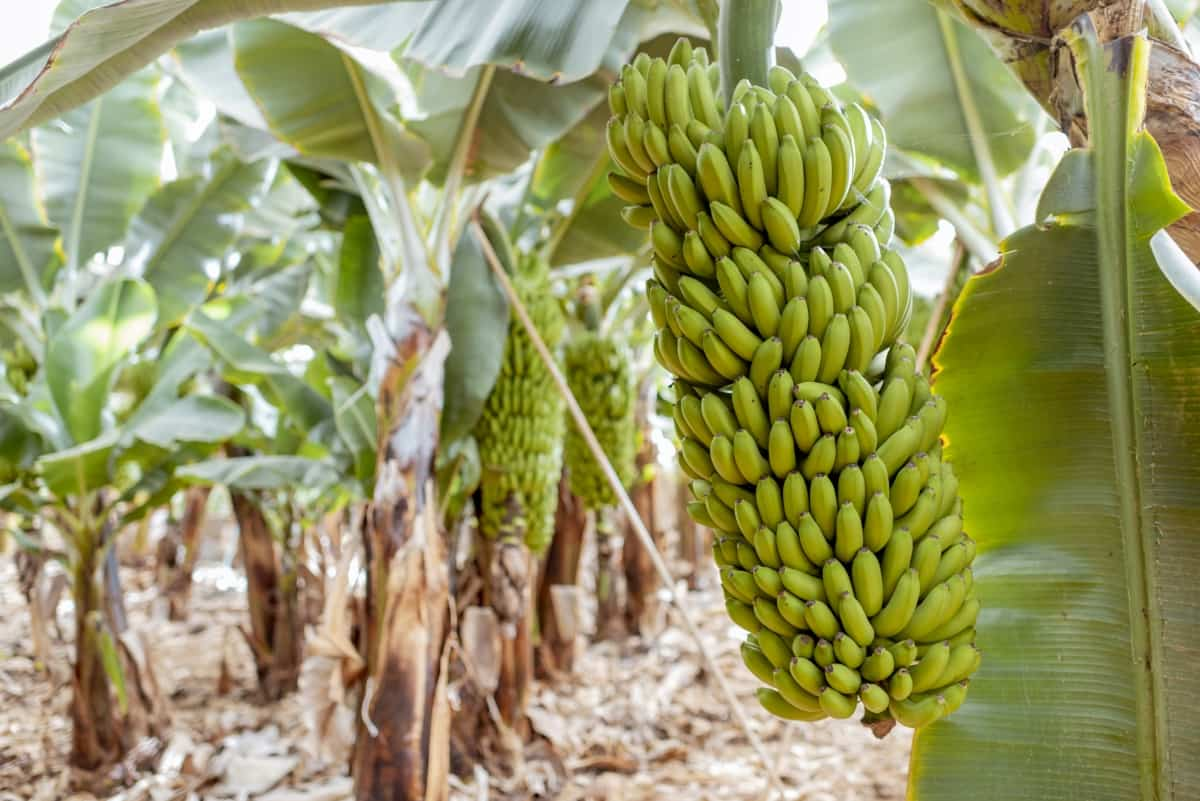Weed control is critical in maintaining a healthy and productive banana plantation. Weeds compete with banana plants for essential resources like water, nutrients, and sunlight and can harbor pests and diseases. To ensure effective weed control in a banana plantation, a combination of strategies should be employed. Here are some of the most effective weed control strategies in Banana plantations.

Weed Control Strategies in Banana
Integrated Weed Management (IWM) for Sustainable Banana Production
Integrated Weed Management (IWM) for sustainable banana production is a holistic approach that combines various weed control strategies to minimize herbicide use and promote environmental and economic sustainability. It involves practices such as crop rotation, mulching, mechanical cultivation, and the targeted use of herbicides when necessary.
By diversifying control methods and reducing reliance on chemicals, IWM helps preserve soil health, protect beneficial organisms, and prevent herbicide resistance. This approach enhances long-term productivity while minimizing weed management’s negative ecological and economic impacts on banana cultivation.
Pre-Emergent Herbicides for Early Weed Control in Banana Plantation
Pre-emergent herbicides are essential for early weed control in banana plantations. These herbicides are applied before weed seeds germinate, creating a barrier in the soil to prevent weed growth. By inhibiting weed establishment, pre-emergent herbicides reduce competition for nutrients and water, helping banana plants to thrive.
They are particularly valuable in the early stages of banana growth when the crop is vulnerable to weed competition. Effective pre-emergent herbicide use minimizes labor and promotes healthy, high-yielding banana crops, contributing to sustainable and economically viable plantations.
Targeted Hand-Weeding for Selective Weed Removal in Banana Field
Targeted hand-weeding is a precise and selective weed management method employed in banana fields. This approach involves manually removing unwanted weeds while sparing the banana plants. Skilled laborers identify and uproot weeds, ensuring minimal disruption to the crop. Targeted hand-weeding is especially valuable in organic farming or integrated weed management systems, where chemical herbicides are avoided. It prevents weed competition, conserves soil moisture, and reduces the risk of herbicide resistance in the long term.
In case you missed it: Best Practices for Banana Planting and Spacing: Various Banana Planting Methods

Mulching with Organic Materials for Weed Suppression in Banana Plantation
This technique involves covering the soil around banana plants with organic matter, such as straw, leaves, or compost. The mulch works as a physical barrier, preventing weeds by blocking sunlight and inhibiting weed seed germination.
Additionally, it conserves soil moisture, maintains a more stable soil temperature, and improves soil health by decomposing the organic material. Mulching reduces the need for herbicides and minimizes weed competition, enhancing the overall health and productivity of the banana crop while promoting sustainable and environmentally friendly agricultural practices.
Companion Cropping with Non-Host Plants for Weed Competition in Banana Field
W weed competition is effectively reduced by interplanting banana trees with non-host species that are not susceptible to the same pests or diseases. These non-host plants act as a natural barrier, outcompeting weeds for sunlight, nutrients, and space. This approach not only suppresses weed growth but promotes biodiversity and can provide additional benefits like attracting insects. Companion cropping fosters a more ecologically balanced and sustainable banana field, mitigating the reliance on herbicides and improving the overall crop health and productivity.
Cover Cropping for Soil Protection and Weed Control in Banana Plantation
Planting cover crops, like legumes or grasses, in between banana rows helps reduce soil erosion, conserve moisture, and enhance soil structure. These cover crops create a living mulch that competes with weeds for resources, suppressing weed growth naturally.
In addition, they contribute organic matter when incorporated into the soil, enriching soil fertility and microbial activity. This approach minimizes the need for synthetic herbicides and fosters sustainable and environmentally friendly banana cultivation, resulting in healthier soil, improved weed management, and higher-quality banana yields.
Flame Weeding for Efficient Weed Control in Banana Plantation
It involves using propane torches to deliver intense heat, quickly killing weeds by causing cell damage and dehydration. Flame weeding is highly effective for managing weeds in row middles and interrows without harming the banana plants. It is a precise and environmentally friendly technique that reduces the need for chemical herbicides, minimizing the risk of herbicide resistance and potential harm to the crop.
In case you missed it: Different Methods of Banana Propagation: Exploring Various Techniques

This approach saves labor and resources, promotes healthy banana growth, and contributes to sustainable and economically viable banana production while minimizing ecological and human health risks associated with herbicide use.
Solid Matrix Fertilizers for Nutrient Management and Weed Control
These specialized fertilizers incorporate slow-release nutrients embedded within a solid matrix, providing sustained nourishment for crops. Simultaneously, they create a physical barrier that hinders weed growth, effectively suppressing weeds. Solid matrix fertilizers offer precision in nutrient delivery, reducing over-fertilization and minimizing the need for separate herbicides. This integrated approach enhances nutrient efficiency, conserves resources, and promotes healthier crop growth.
Precision Agriculture Techniques for Targeted Weed Control in Banana Plantation
Precision agriculture techniques are pivotal for targeted weed control in banana plantations. These methods utilize GPS, remote sensing, and automated machinery to accurately identify and manage weeds. Variable rate technology allows for customized herbicide applications, minimizing overuse and reducing environmental impact. Drones and sensors will provide real-time data on weed distribution, enabling timely interventions. Robotics and automated weeding equipment can precisely target and remove weeds while sparing banana plants.
Crop Rotation and Residual Herbicides for Long-Term Weed Management in Banana
Crop rotation involves alternating banana planting with non-host crops, disrupting weed life cycles and reducing their overall prevalence. When used strategically, residual herbicides leave behind active ingredients in the soil that inhibit weed germination and growth. This approach minimizes weed competition while preserving soil health and fertility.
In case you missed it: Best Fertilizers for Banana Plants: Organic, Slow-Release, Liquid, and Foliar

The combination of crop rotation and residual herbicides reduces the reliance on frequent herbicide applications, helps prevent herbicide resistance, and promotes sustainable, economically viable banana production, ensuring long-term weed control in the plantation.
Conclusion
In conclusion, effective weed control in banana plantations is crucial for maximizing yields and sustainability. Combining strategies like integrated weed management, targeted hand-weeding, mulching, and precision techniques can reduce herbicide reliance, conserve resources, and promote a healthier, more resilient crop. Implementing these strategies collectively ensures weed suppression and supports long-term viability and ecological balance in banana cultivation, yielding superior results for farmers and the environment.
- Feed Your Flock for Less: Top 10 Tips to Save on Chicken Feed
- Ultimate Guide to Ossabaw Island Hog: Breeding, Raising, Diet, and Care
- Hatching Answers: The Top 10 Reasons Your Chickens Aren’t Laying Eggs
- Eggs and Economics: Breaking Down the Cost of Raising Backyard Chickens
- Defend Your Greens: Proven Methods to Keep Iguanas Out of Your Garden
- Ultimate Guide to Cinnamon Queen Chicken: A Comprehensive Guide for Beginners
- Ultimate Guide to California Tan Chicken: Breeding, Raising, Diet, Egg-Production and Care
- Ultimate Guide to Marsh Daisy Chicken: Breeding, Raising, Diet, and Care
- 10 Types of Chicken Farming Businesses You Can Start for Profits